#Clara Rockmore
Explore tagged Tumblr posts
Photo

Clara Rockmore plays the terpsitone, an electronic instrument invented by Léon Theremin, at Carnegie Hall in 1932
1K notes
·
View notes
Text


Clara Rockmore (1911-1998) solo - theremin virtuoso Works: "Nocturne in C-Sharp Minor," "Ave Maria Op. 52" Defeated Opponents: Siw Malmkvist Propaganda: see visual
Aretha Franklin (1942-2018) solo Songs: "Think," "Respect" Defeated Opponents: Sylvie Vartan Propaganda: "The Blues Brothers should have taken her with them instead of her husband. big mistake there." "Aretha deserves all the Respect"
Visual Propaganda for Clara Rockmore:

Visual Propaganda for Aretha Franklin:



youtube
20 notes
·
View notes
Text

Behind the bite of your badly trimmed beard There is the sweetness of your tongue My man And behind the rugged callous hands on my bare skin There is the languor of your soul And the weight of your past years The heavy load of your thousand lives The blood of the dead and the lightness of drafts I feel all this in you when you kiss me deep within me.
Your tongue plays with mine, with the practice of lovers from past life Before pausing on the tiny red spot Before the red colour of my lips That is found on all corners of your naked body Reminds me of wilted roses of A thirsty summer When I drank you You drank me Yes, there, And then I drank all of you again.
And when I’m done drinking you, looking at you, kissing you, When my eyes can not hope to look at you,
And that my hands will finally find what they were looking for on the surface of your skin and in the folds of your face,
When the taste of my mouth will end to unite with the taste of your mouth, What will remain of our love, my love?
O mortal, do not ask such questions The night granted to us by the gods is limitless When you have consumed me When you have tasted the bitter And the salt, and sweet spots Of my body When I have seen your soul Shimmering through your sheer, bare body When the taste of our mouths has united We will begin again, my love For the taste of bodies, of souls Change from night to night to night
Will you come, tonight, to taste the New flavours of my body?
Will you take a little of me in you, On you Around you ?
And maybe we mix every night, every night, every morning We will finally reproduce this mystical figure of the androgynous This unique body This unique soul This eternal union of the material and the spiritual For ever Merged A never ending Kiss
Yes And Yes And yes, my love In this century The art of merging Bodies and soul Matter and spirit Dream and reality This ancient alchemy of androgyny Will be known Only to us.
Clarice Lispector
yes and yes and yes, my love
#clarice lispector#clara rockmore#manuel de falla#self portrait#self shot#my face is here in the maelstrom#blood everywhere#i wear my heart on my skin#oestrogen hair#the migraine series#el amor brujo#our magic
10 notes
·
View notes
Text
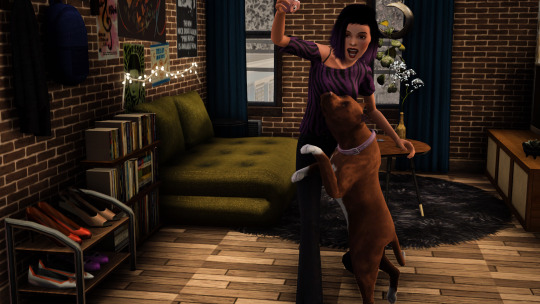
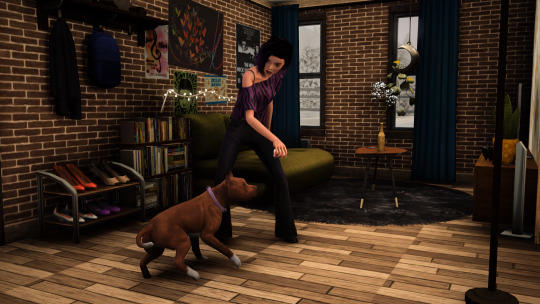


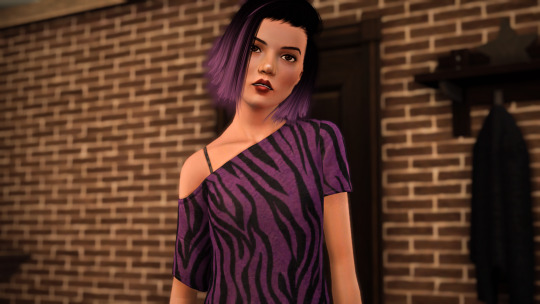
some snapshots of Clara Rockmore made by @ninjaofthepurplethings
25 notes
·
View notes
Text
330: Clara Rockmore // Theremin
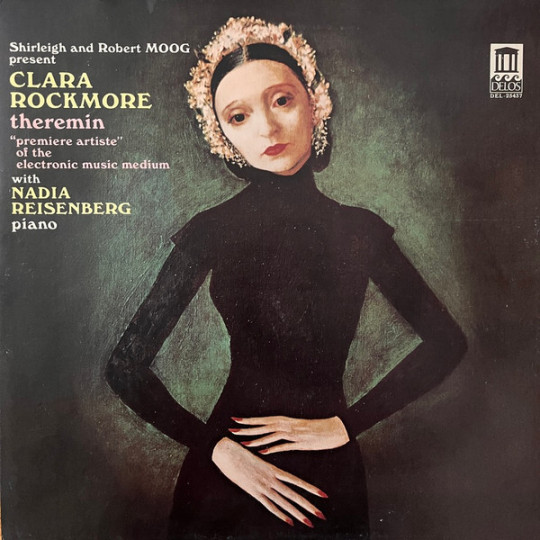
Theremin Clara Rockmore 1977, Delos (Bandcamp)
100 years since its invention, the theremin remains an oddity. It is in every respect an antiquated piece of technology, and yet like the Tesla coil and the plasma globe it still provokes the primal wonder of science-as-magic. The advancements of a modern synthesizer unit are hidden from the eye—if you presented it to an unthawed person from the 19th century, they would at least be able to infer that the device is controlled using the buttons and keys. But the theremin player creates sound by coaxing an invisible magnetic field with their bare hands, as though they are pulling its warbling voice from the air itself—and indeed, inventor Léon Theremin’s artful original name for his instrument was the ætherphone.
youtube
To watch a performance by Clara Rockmore, the instrument’s foremost practitioner, is to see something that resembles a scene from a séance or a German Expressionist film. A petite, dark-haired woman with the eyes of an Orthodox Virgin Mary, she would stand ramrod straight behind the lectern-like theremin, nearly motionless save for the almost palsied-looking convulsions of her knotted hands and the tensing of her eyebrows, the only sign on her otherwise slack features of the intensity of her concentration. She looks as though she is forcing down the song attempting to leap from her throat until it screams through her fingertips like steam from a kettle. As synth pioneer Robert Moog explains in his liner notes to Rockmore’s 1977 LP Theremin, her absolute stillness was not a theatrical device but a requirement of playing the instrument: the theremin’s magnetic field encompasses not only the performers hands but their entire upper body, meaning that even a minor motion of the head will influence the instrument’s pitch. But the austere figure she cut no doubt contributed to her allure, the sense that she was herself as unearthly as the instrument she played.
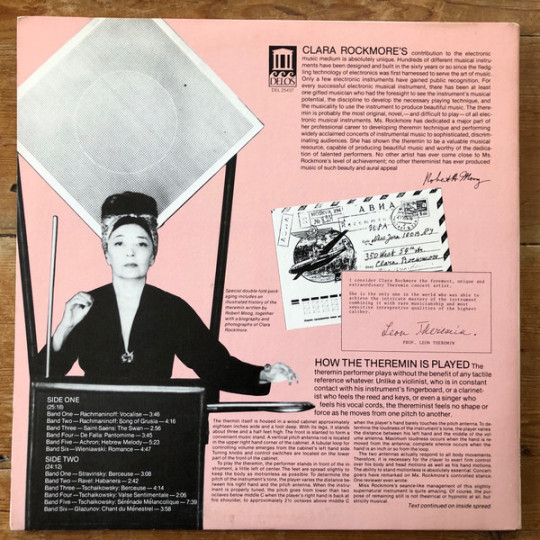
Rockmore, a violin prodigy since age 5, took to Theremin’s invention sometime in the late 1920s. Her concerts popularized and legitimated the instrument, but it would be nearly a half-century before the Theremin LP, her first, was finally released. Produced by Shirleigh Moog and engineered by her husband Robert, one gets the sense that the Moogs are fans trying to correct an oversight, to record the album as it would’ve sounded if it had been made her during her prime. The results are captivating, even haunting. At times you may be fooled into thinking you’re listening to a recording of a human soprano from some decayed shellac disc; in other moments, you will be moved by how world-weary an electronic tone can sound. Rockmore is accompanied, as she had been since the beginning, by her sister Nadia Reisenberg on piano, and her selections focus on 19th and early 20th century compositions, with a heavy emphasis on the Romantics. A majority of the pieces here come from her fellow Russians, including Tchaikovsky, Glazunov, Rachmaninoff, and Stravinsky. My personal favourite of these is her take on Joseph Achron’s “Hebrew Melody.” Inspired by traditional laments, Rockmore’s theremin evokes the sobbing characteristic (krekhts) of Jewish vocal music, while her sister thunders and pirouettes on her piano in a classically Romantic style.
Theremin stands apart from other electronic classical records like Wendy Carlos’ Switched-On Bach because it never sounds wholly like a novelty despite the theremin’s high camp potential (and, for that matter, Rockmore’s). It is peculiar, and my fascination with it definitely originated in a perverse nostalgia for esoteric junk—but the somber beauty of the sisters’ performance wiped the smirk from my face from virtually the moment I dropped the needle.
330/365
#clara rockmore#theremin#leon theremin#robert moog#moog#shirleigh moog#electronic music#early electronic#romantic music#'30s music#'70s music#classical music#nadia reisenberg#music review#vinyl record#mississippi records#joseph achron#tchaikovsky#rachmaninoff#glazunov#achron#stravinsky
12 notes
·
View notes
Text
Clara Rockmore does the Berceuse from Stravinsky’s Firebird
[yt]
14 notes
·
View notes
Text

My emotional support clara
6 notes
·
View notes
Note
Thoughts on wendy carlos?
-Bonus
She is so dang cool. I’ll be honest, I didn’t know much about her before this ask. After watching a few interviews and reading up on her, I’m so impressed. Being a trans woman in the 70s-80s was tough as it is, but being in the music and film industry too? Damn impressive. Plus, she helped make the Moog Synthesizer!!! I love that instrument, so dang impressive. I didn’t even know she also made the soundtracks for films such as The Shining, Clockwork Orange, and Tron. I definitely look up to her.
Another woman in the electronic music genre of the past I find very interesting is Clara Rockmore. She helped work on the Theremin! She was also the most successful player of the instrument, helping introduce the art of electronic instruments to the world. Her music was almost ghostly in quality, really impressive stuff for the early instrument.
#robot girl#robotgirl#robotposting#transfem#mtf trans#moog synthesizer#theremin#wendy carlos#clara rockmore#women in music#music history#trans history
6 notes
·
View notes
Text
#messy nessy chic#electronic music#daphne oram#anais nin#clara rockmore#Else Marie Pade#Elaine Radigue#Delia Derbyshire#wendy carlos#Laurie Spiegel#Suzanne Ciani#Susan Dietrich Schneider#the space lady
12 notes
·
View notes
Text


Clara Rockmore (1911-1998) solo - theremin virtuoso Works: "Nocturne in C-Sharp Minor," "Ave Maria Op. 52" Propaganda: see visual
Siw Malmkvist (1936-) solo Songs: "Liebeskummer lohnt sich nicht," "Harlekin" Propaganda: see visual
Visual Propaganda for Clara Rockmore:


Visual Propaganda for Siw Malmkvist:

13 notes
·
View notes
Text
Do you like old synthpop? Then OHM: The early gurus of electronic music is something for you!!

The whole compilation is on Spotify(some songs missing) and YouTube (3 songs missing) and probably other sites too :) it consists of the most important early composers and pieces from many different places, time periods and styles.
Some pieces uses one of the first ever electronic musical instruments: the theremin! It was invented by soviet musician-physicst Leon Theremin around 1920, therefore the name. This instrument is space-controlled, so you play it by moving your hand around it, not really touching it. It looks really cool!
In the first track (CD:1), "Tchaikovsky: Valse Sentimentale" (2:08) 1977, Clara Rockmore, a true pioneer in space-controlled electronic music, plays the Theremin together with her sister Nadia Reisenberg, who plays piano. This piece is truly magnificent and strange-soundig :D Rockmore actually was Leon Thermins student and protégé in the beginning of her career!
Before this gets way too long I must tell about one of my favourites in CD:1, which is the 4th track: "Williams Mix" (5:42) 1952 by John Cage. ...... And at the end of it you can hear a long abd roaring applause, which is very much deserved, of course :D Chris Cutler (musician, composer) tells about this piece in the booklet included with the CD collection.
"Williams Mix" follows a score five hundred pages long, which has never been reproduced, each page made up of two ten-inch graphic sections. The tape is to be laid directly on the page, which is a pattern showing all the edits and the angles at which tape should be cut, as well as recipes for constructing the sounds each piece of tape should contain -Cutler, 2000

The score he's talking about (a piece of it pictured above, x) is a sort of pattern or guide for making the pieces of magnetic tape that was used, making it possible to split, splice and edit the sounds. Around 600 tracks of sounds from for example the country, the city, wind- and electronically produced sounds. (X) This took about a year and was absolutely groundbreaking work! More info here!
If you liked that one, "He Destroyed Her Image" (1:59) 1973 by Charles Dodge is also a mix of different sounds, but made with newer and more advanced technology, and it's far more melodious and, well, structured. It plays with words like a poem, and Dodge has the following to say about it (from the booklet, source below):
I'd never been able to write very effective vocal music, and here was an opportunity to make music with words. I was really attracted to that. It wasn't singing in the usual sense. It was making music out of the nature of speech itself. I've always liked humor and had an attraction to the bizarre, the surreal. These poems were almost dreamlike in their take on reality. So that made me feel at home somehow. -Dodge, 2000
This is my favourite in CD:3 and the vibes are really amazing! I think thats all for this post but if you are interested, just ask me and I'll write about more of the songs! The whole collection has 42 in total :)
Sources for images are provided in the main text or ALT text, as well as links with other sources for information. Source for the booklet that came with the CD: OHM: the early gurus of electronic music: 1948-1980 (2000) by Thomas Ziegler and Jason Gross, ellipsis arts.
#music#music review#cd#electronic music#synth pop#old electronic music#ohm the early gurus of electronic music 1948-1980#leon theremin#clara rockmore#john cage#williams mix#he destroyed her image#Charles Dodge#article#informative
3 notes
·
View notes
Text
youtube
A bit of spooky for you, from me.
0 notes
Audio
Oh gosh, the Providence Public Library had this on vinyl when I lived there.
Clara Rockmore - Saint-Saëns: The Swan
Buy it here.
121 notes
·
View notes
